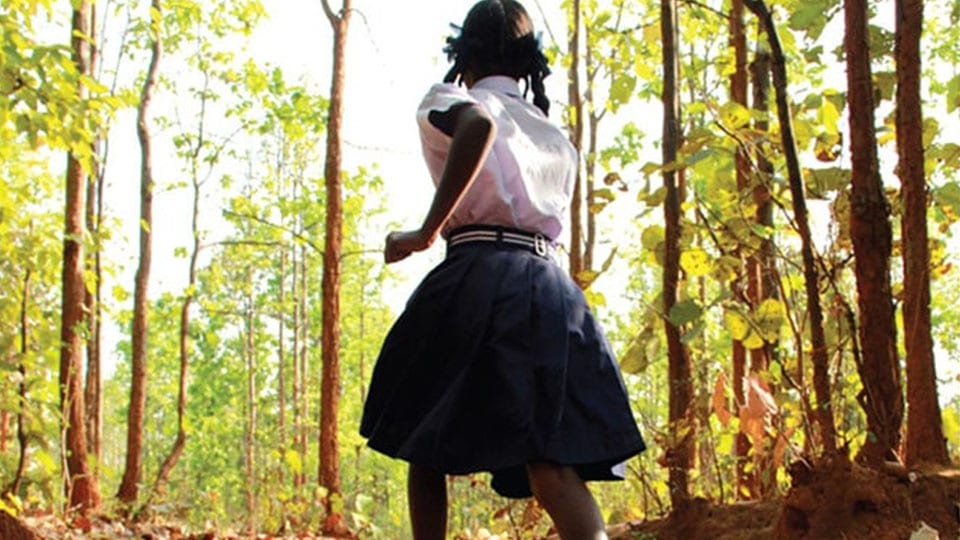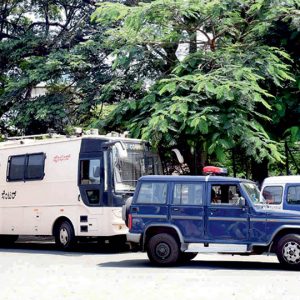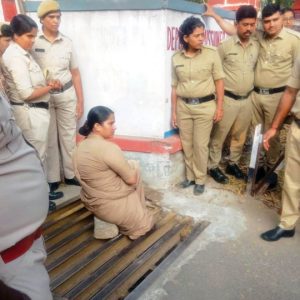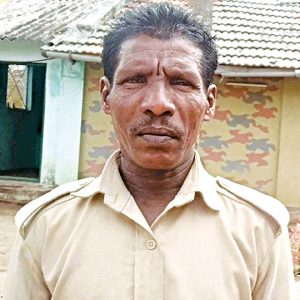By Dr. R. Balasubramaniam
Manikarnika (name changed both for privacy and security reasons) was a lively sixteen-year-old studying in a College near her village which was located 200 kms from the State capital of a Eastern State of India. Being a tribal girl was not easy and she was lucky to have a father who ensured that all his four children got a decent education. Manikarnika aspired to become a nurse and dreamt of serving in a hospital located close to her village. From her young days, she was very concerned about the plight of her people and wanted to contribute in any way she could to make their lives better.
One summer, she had just come home on her holidays and was surprised at the tension that filled her village. All the elders were huddled together and talking about the loss of their land and how they now needed to move to unfamiliar terrain. Being one of the few educated youths in the village, she was curious to understand how something like this could happen so suddenly.
Enquiries revealed that the land they were cultivating had been acquired more than twenty years ago by the Government with the intent of making the entire region an Industrial hub like Ruhr of Germany. Since no one had really bothered to evict them from the acquired land, all the tribal farmers had continued with tilling it. In fact, several of them had even forgotten that technically this was not their land anymore and it now belonged to the Industries Department of the Government.
She heard that a large company known for their manufacturing activities had been invited by the Government to put up a factory here and that more than a thousand tribal families would now be displaced from their original habitat. She was at once anxious, angry and sad. She knew the emotional pain that her family and community will now have to endure due to giving up land that their families owned for generations. While she felt angry at what she thought was the high-handedness of the Government and the Corporate sector, she also felt terribly helpless. All that she thought she could now do was to join her people in voicing their protest.
She decided to join the local youths in staging dharnas (protests) and mobilising other fellow tribals in opposing the land acquisition and the construction of the factory. This also meant that she never got back to going to College despite her father urging her to do so. Over the next few months, she got sucked into fighting the cause of her people and was slowly being recognised as one of the ‘agent provocateurs’. The protests too were becoming increasingly ugly and turned violent one fateful day. The Police forces opened fire and the resulting violence left 13 tribals and one Policeman dead. While the people blamed the Government, the Police and the corporate to whom the land was allotted, the Government felt that the people were being mis-guided by Naxal elements.
While the truth may lie somewhere in between, Manikarnika was now targeted as a Naxalite arousing her people to become violent. Fearing for her life, she was forced to go underground and this further re-affirmed the Government’s view that she was now an anti-social element. This young woman’s character was assassinated and numerous stories about her started floating around. Her father refused to even speak to her and a few months later, she was arrested and jailed.
The next 4-5 years were some of the worst years of her life. Being in jail as an undertrial taught her how fragile and inefficient the justice system in India is. But she used the time well. She completed her graduation and also managed to get herself an MBA through distance education. Though her case kept dragging on, the Courts had to finally acquit her as there was no proof of the allegations that the State had levied against her.
Despite all the hardship and adversities that she had faced, her spirit and passion for her people was unbroken. I met her a few years ago and saw the same joyous, enthusiastic fun-filled Manikarnika. She had neither anger nor any sort of hatred towards anyone or the system even. All she was concerned about was the fate of her people now that the land acquisition was complete and the factory had started coming up. She matter of factly told me that she had accepted what was emerging and still wanted the best for her people. She had also learnt her methods had to be constructive and she resolved to use her leadership skills to ensure that her people were treated with fairness and respect. She used her mobilisation skills to get her people to come together and collectively think through the future that they needed to build for themselves.
With the skills that she acquired while in prison, she now runs a company as a vendor to the company. She has started a construction company that undertakes the rehabilitation work of the company as part of their Rehabilitation & Resettlement (R&R) efforts. She also runs a hospitality venture that helps maintain the factory campus. Today more than 300 tribals, mostly women work in her companies. They get market wages and are socio-economically mobile. Her focus on ensuring that most of her people have got the best deal possible in the rehabilitation settlement speaks volumes of the work that people like her have done.
People like Manikarnika are the ones that exercise leadership by staying focussed on the cause that they have chosen for themselves. They are the people who have ensured that the purpose of their life is much larger than themselves. Their key focus is on the work that they have chosen for themselves and it is always about the ‘others’ around them. They are the people who understand the risk and adversity that leadership brings along in its wake, but call upon their own inner strength to stay focussed despite the dangers that they face. She proudly told me how that she continues the struggle of moving her people up the social and economic ladder and how she sees herself as just another employee. She continues to share the profits with the women she employs and coyly told me that she finally found a man brave enough to marry her.
Manikarnika continues to be the same sweet fun-loving girl that she was 10 years ago. Her determination continues to be strong, her resolve to uplift her fellow tribals is there for all to see. And adversity has not cowed her down. For her, it is not about herself but about her people… as she sees her life’s mission as ‘putting her people first’.
[Dr. R. Balasubramaniam, the founder of Swami Vivekananda Youth Movement & GRAAM, teaches leadership at Cornell University and IIT-Delhi. He can be reached at [email protected]]








An excellent thought provoking article. Thanks for sharing.